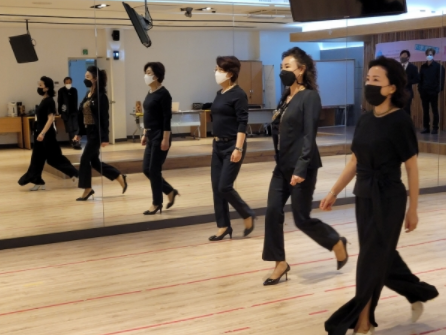A Study on PUBLIC Lifelong Education Model for Second Life Planning and Support for Middle Aged Adults
Culture
Views. 1702
Abstract
Purpose: The purpose of this study is to propose a Public lifelong education model for the second life plan of middle-aged and elderly people in order to cope with the rapid progress of today's aging society. Public support is needed so that middle-aged adults can design their second life and live successfully according to their own plans. In this study, the purpose is to propose a lifelong education model for the second life design and support for middle-aged adults.Method: The research method of this study used various methods such as literature research, Delphi research, and expert advisory meeting. First, literature research and previous studies related to life redesign and second life of middle-aged adults were analyzed. And, using the components of the middle-aged adult lifelong education model of the expert group extracted from the Delphi survey results. Finally, a lifelong education model was developed to support the second life plan for middle-aged and elderly people by collecting and reflecting the opinions of the expert group.
Results: As a result of the study, the second life support lifelong education model for middle-aged and elderly people focuses on middle-aged learners, and analyzes the second life plan of middle-aged and elderly through counseling on life course and learning according to the learner's personal career and orientation. It is necessary to develop lifelong education programs that can support this and guide them to participate in such lifelong education.
Conclusion: Supporting the second life plan for middle-aged and elderly people is not something that any individual or institution can do. Therefore, it is necessary to approach the lifelong education model that supports the second life plan of the middle-aged and elderly with a strategy that connects and utilizes existing systems and functions to the maximum extent.
[Keywords] Lifelong-Education, Lifelong-Learning, Aging-Society, Second-Life-Design, Lifelong-Education-Model
References
[1] Choi MJ. An Exploration on Middle Aged Women’s Social Capital and Economic Capital: A Compar-ison of Four Different Age Groups. Health and Social Welfare Review, 32(2), 124-163 (2015).
[2] Doo SH & Chang JY & R JI. The Effects of Work Centrality on Active Aging among the Older Adults: Mediating Role of Generativity. Korean Journal and Organizational Psychology, 27(3), 565-584 (2014).
[3] Kim JH. Productive Activities of Older People and Their Influence on Life Satisfaction. Development and Society, 36(1), 45-69 (2007).
[4] Byun JS & Kwon CH. The Analysis of Decision Factors for Middle-aged Women's Social Later-life Preparation: Focusing on the Regulation Effect of 386・X Generations. Korean Policy Sciences Re-view, 20(4), 173-199 (2016).
[5] Shin SM & Kim DB. The Effects of Preparation for Old Age of the Past on Activity of the Elderly: The Mediating Effect of Psycho-social Resources. Korea Journal of Social Welfare Studies, 44(3), 57-83 (2013).
[7] Chung JA & Kim YJ. Self-parenting of Middle and Old Aged Men in Korean. Asia-pacific Journal of Multimedia Services Convergent with Art, and Sociology, 7(10), 577-587 (2017).
[8] Park CJ. Financial Preparation Trend for Aging of the Middle-aged over Time and Their Determinants in Korea. Korean Journal of Gerontological Social Welfare, 73(4), 217-248 (2018).
[9] Ryu SI. Retirement Management of Firefighters in Korea. International Journal of Human & Dister, 2(2), 19-22 (2017). [Article]
[10] Lee MH & Kang KS. A Study on Causes of Elderly Crimes on Korea and Countermeasures. Interna-tional Journal of Criminal Study, 2(1), 11-15 (2017). [Article]
[11] Chang IS. Security Policy of Police according to Increase of Elder Crimes. International Journal of Police & Policing, 2(2), 1-6 (2017). [Article]
[12] Yang JS & Kim HN & Choi BH. The Purchase Behavior of HMR for Safety Food Culture for the El-derly People. International Journal of Crisis & Safety, 5(2), 1-8 (2020). [Article]
[13] Lee ES. The Effects of Preparation for Aging Health Trajectory of People over 50 Years Old with Disabilities. Korean Journal of Local Government & Administration Studies, 34(4), 295-312 (2020).
[14] LEE JB & Liang D. Suggestions for Using AI in Preparation for a Super-aging Society. Robotics & Ai Ethics, 5(2), 57-64 (2020). [Article]
[15] Choi WH. A Study on the Factors Affecting Job Separation by Middle and Old Aged Self-employed Using KLoSA Panel. The Journal of Vocational Education Research, 37(1), 119-138 (2018).
[16] Han TY & Shin SK & Rie JI. The Mediation Effects of Post-retirement Preparation on Active Ageing and Productive Aging: Based on Theory of Planned Behavior. Korean Journal of Culture and Social Issues, 22(2), 137-163 (2016).
[17] Cho HJ & Gwak MJ. Social Interaction and Financial Stability of Middle and Old Aged Households. Consumer Policy and Education Review, 16(2), 27-55 (2020).
[18] An KS & Hwang JY. Reorganization of the Baby-boom Generation and the University Lifelong Ed-ucation System. Journal of Digital Convergence, 17(11), 509-515 (2019).
[19] Yang HK & Nam MR. The Study on the Life Patterns and Learning Patterns of an Middle and Old Age Korean. Global Creative Leader: Education & Learning, 9(5), 223-244 (2019).
[20] Ko JK. Review of Connection between the Employment Policy and Pension Policy. Labor Law, 18, 259-289 (2004).
[21] Kim MJ. A Study of the Factors Affecting Successful Aging and Their Roles in Lifelong Learning: Baby Boomers in Korea. Journal of Lifelong Learning Society, 9(2), 23-50 (2013).
[6] Kwon DS & Jo AM. Adult Learning and Counseling to Realize a Lifelong Learning Society. Kyoyook-book (2016).

? Source: dhnews.co.kr
